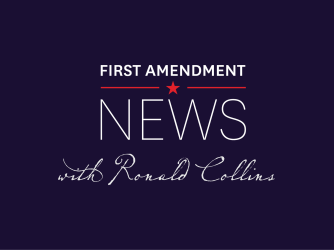Table of Contents
Freedom or safety? College admins don’t need to choose.
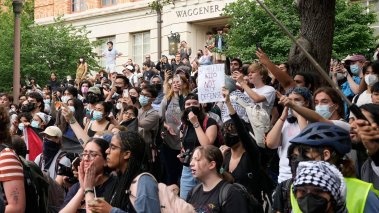
Jay Janner / American-Statesman / USA TODAY NETWORK
Students watch and participate in a pro-Palestinian protest at the University of Texas on April 24, 2024.
Against the backdrop of the war in Gaza, college administrators are confronting a flurry of student activity on campus that includes peaceful protest and lawful self-expression, punctuated at times by bursts of severe disruption and even isolated acts of violence.
Separating First Amendment-protected speech from illegal conduct in these situations can present challenges, but it’s not an impossible task. Years of Supreme Court precedent provide guideposts for distinguishing between the two. Still, too many academic leaders fail to respond appropriately when tensions flare.
Recently, the University of Texas at Austin tried to preemptively stop a pro-Palestinian student group from holding a planned protest on campus. During the protest, which appeared to be peaceful, state troopers descended on the scene at the request of UT Austin and the direction of Gov. Greg Abbot, arresting more than 50 protesters. All charges against the demonstrators were later dropped, with the county attorney citing "deficiencies" in the probable cause affidavits.
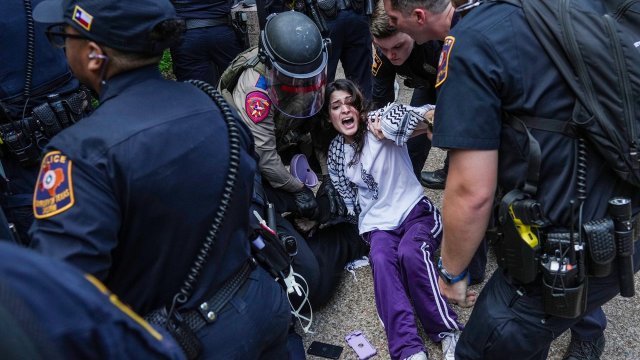
Texas tramples First Amendment rights with police crackdown of pro-Palestinian protests
News
More than 50 arrested after state police storm protestors at University of Texas at Austin.
As far back as November, the University of Southern California relegated an economics professor to remote teaching after he told campus protesters that “Hamas are murderers” who “should be killed.” This month, the same school apparently caved to a heckler’s veto after a pro-Palestinian student’s online commentary drew criticism: Citing vague and unsubstantiated safety concerns, the school immediately canceled the student’s valedictory speech instead of bolstering security or exploring other options to ensure it could proceed.
And who could forget December’s congressional hearing on anti-Semitism, where the then-presidents of Harvard University and the University of Pennsylvania ostensibly defended free speech — only for their messages to fall flat in light of their institutions’ terrible track records?
The message to students everywhere is plain: It’s unclear what forms of campus speech and conduct are subject to discipline and what forms are okay. To provide clarity — and to ensure freedom of expression — universities must adopt free speech principles and enforce them consistently.
Here’s where they can start.
Defend speech
The First Amendment protects even subjectively harmful, hateful, and offensive speech — and for good reason. When people face punishment for their words just because someone, somewhere, finds them distasteful, the window of public discussion becomes stultifyingly narrow.
University leaders must not let this happen on campus.
If leaders at both public and private institutions want to preserve an environment where teaching, research, and learning flourish, they should staunchly protect even the most objectionable speech. Critically, as FIRE says in its “10 common-sense reforms for colleges and universities,” they should do so in policy and in practice, making the scope of speech rights abundantly clear.
Actions that match words will show students and faculty that the proper way to counter speech we dislike is with more speech, not censorship.
Condemn violence, disruption, and censorial behavior
Universities should be battlegrounds for ideas — not literal battlegrounds.
A campus where unprotected conduct and expression — such as violence, true threats and intimidation, incitement, and discriminatory harassment — go unaddressed is a campus where faculty and students will be afraid to speak.
If today’s campus unrest leads college administrators to begin defending and upholding free speech principles, the current cloud of chaos may yet have a silver lining.
Administrators should familiarize themselves with these categories and meet them with proportional and appropriate discipline. They should also familiarize themselves with what constitutes reasonable time, place and manner restrictions for addressing substantial disruptions.
“Times like this may seem to present the most righteous justifications for bending the rules in one direction or the other, to either permit the censorship of protected speech or to allow unprotected speech or violence to go unpunished,” FIRE Legal Director Will Creeley wrote last year. “But we cannot let either happen.”
Teach students the difference
In a perfect world, first-year students would arrive at orientation with knowledge of the First Amendment and a deep respect for free speech norms. But if the surge of deplatforming attempts after the October 7 Hamas attacks on Israel is any indication, that’s not happening.
Colleges need to start with the basics by teaching students free speech fundamentals from day one.
FIREs 10 common-sense reforms for colleges and universities
Public universities, where students’ First Amendment rights are guaranteed by law, should introduce educational materials that familiarize students with the First Amendment and its boundaries. Private universities that promise free speech rights in their student handbooks or promotional materials should similarly clarify norms and expectations around speech on campus.
Freedom and safety, often misperceived as opposite values, can be mutually reinforcing.
Teaching students their rights and responsibilities early — and regularly reinforcing those lessons — sets the stage for an academic experience unmarred by censorship or substantial disruption.
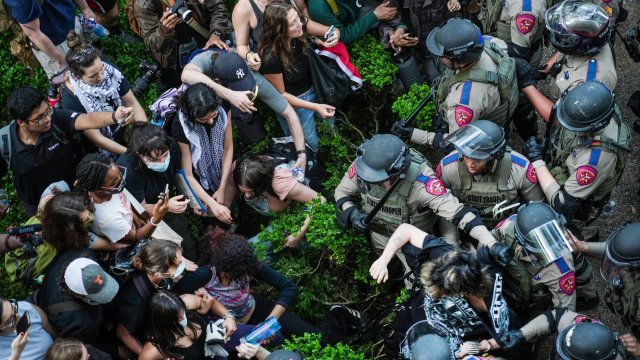
Here’s what students need to know about protesting on campus right now
News
As Israel/Gaza campus protests spread nationwide, FIRE answers questions about students’ expressive rights.
When people feel physically safe, they’re willing to express themselves. And when people express themselves, their peers feel comfortable doing the same. The resulting sense of comfort is not merely psychological: Knowing what those around us really believe, especially if it’s ugly, can help us take intelligent and informed action.
When either freedom or physical safety is compromised, it undermines the other. When both break down — well, then we have a crisis on our hands.
This may describe what’s happening on campuses today. And it may explain why doing the right thing now may not immediately alleviate campus tensions. But that doesn’t mean university leaders shouldn’t try.
If today’s campus unrest leads college administrators to begin defending and upholding free speech principles, the current cloud of chaos may yet have a silver lining. Then, maybe America’s most esteemed higher ed institutions will develop reputations as hotbeds for discovery — not controversy.
For more information on improving speech policies and practices on campus, check out FIRE’s resources for college administrators.
Recent Articles
FIRE’s award-winning Newsdesk covers the free speech news you need to stay informed.

How court rulings in Hong Kong and Australia threaten the global internet
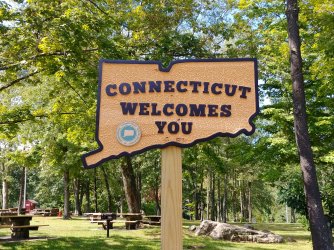
Another Connecticut town tramples Constitution with onerous town green rules
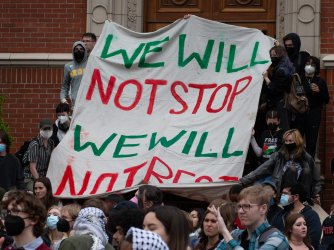
Majority of college students support Israel/Gaza campus protests, 1 in 10 actually participate in them
